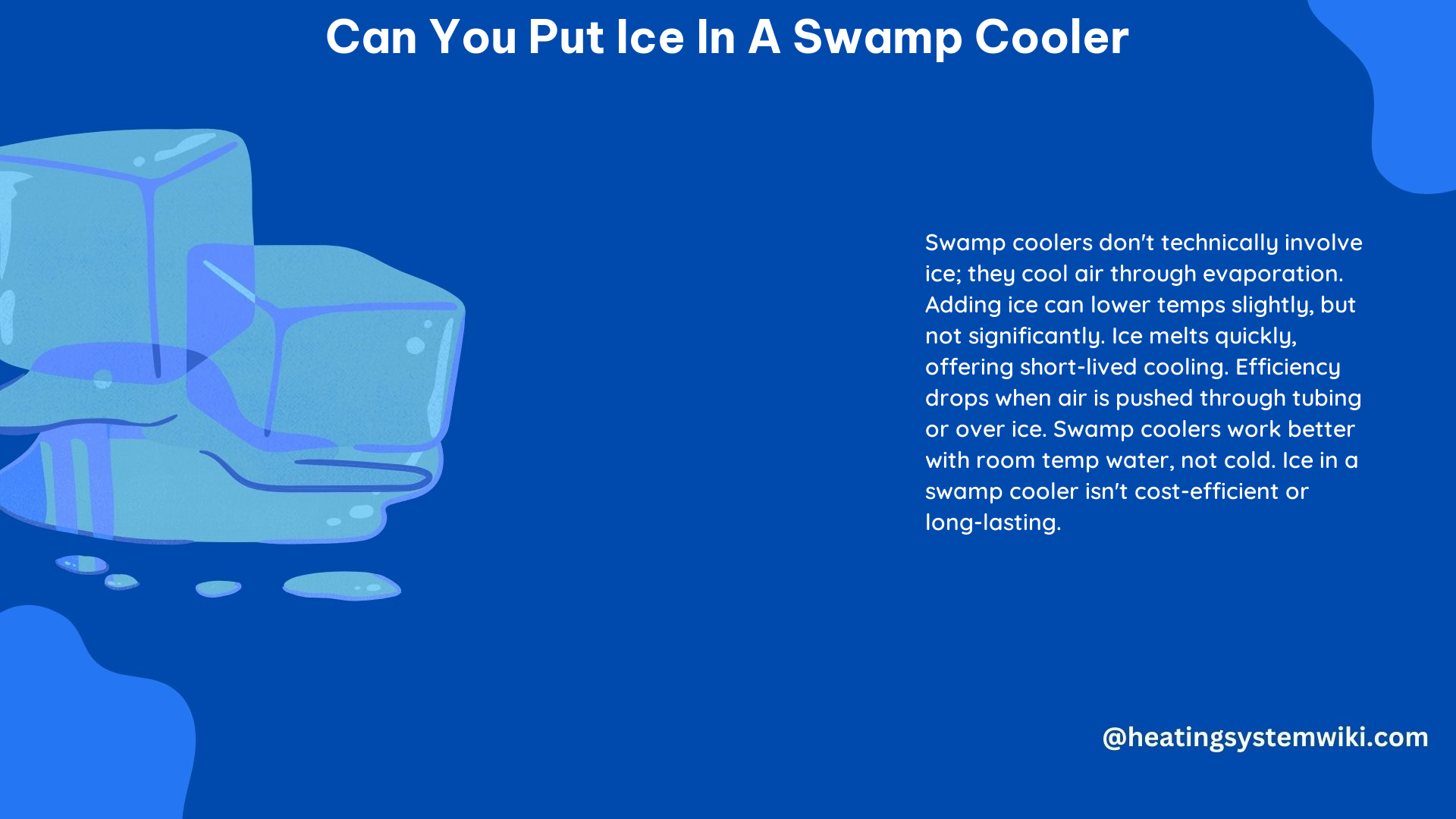Swamp coolers, also known as evaporative coolers, are a popular and energy-efficient alternative to traditional air conditioning systems. These devices work by drawing in hot, dry air and passing it through a wet pad, causing the water to evaporate and cool the air. While it is possible to add ice to a swamp cooler, it may not be the most effective way to enhance its cooling performance.
Understanding the Mechanics of Swamp Coolers
Swamp coolers rely on the principle of evaporative cooling, which is a natural process that occurs when water evaporates. As the hot, dry air passes through the wet pad, the water in the pad absorbs heat from the air, causing it to evaporate. This evaporation process lowers the temperature of the air, which is then blown into the room or building.
The effectiveness of a swamp cooler is largely dependent on the relative humidity of the air. In dry climates, where the air has a low relative humidity, the evaporation process is more efficient, and the cooler can effectively lower the temperature. However, in humid environments, the air may not be able to hold enough moisture to allow for effective evaporation, reducing the cooling capacity of the unit.
The Impact of Adding Ice to a Swamp Cooler

When ice is added to the water tank of a swamp cooler, it can temporarily lower the temperature of the water, which in turn can increase the cooling capacity of the unit. The cold air from the melting ice is then blown into the room, providing a short-term cooling effect.
However, this effect is often short-lived, as the ice will melt quickly, and the water will return to its original temperature. Additionally, adding ice to the water tank can actually hinder the evaporation process, as the water may not be able to heat up enough to facilitate effective evaporation.
Factors to Consider When Adding Ice to a Swamp Cooler
If you decide to add ice to your swamp cooler, there are a few factors to consider:
-
Ice Quantity: The amount of ice you add to the water tank can impact the cooling performance. Too much ice may slow down the evaporation process, while too little may not provide a significant cooling effect.
-
Ice Quality: The type of ice you use can also affect the performance of the swamp cooler. Larger, denser ice cubes may take longer to melt, providing a more sustained cooling effect.
-
Water Temperature: The temperature of the water in the tank can also play a role in the cooling performance. If the water is too cold, it may not evaporate as quickly, reducing the overall cooling capacity of the unit.
-
Humidity Levels: As mentioned earlier, the relative humidity of the air can greatly impact the effectiveness of a swamp cooler, even with the addition of ice.
Alternative Cooling Strategies for Swamp Coolers
Instead of relying solely on ice to enhance the cooling performance of a swamp cooler, there are other strategies you can consider:
-
Increase Air Flow: Ensuring that the swamp cooler has adequate air flow can improve its cooling efficiency. This may involve adjusting the fan speed or positioning the unit in a way that maximizes air circulation.
-
Maintain the Pads: Regularly cleaning and replacing the wet pads in the swamp cooler can help ensure that the evaporation process is as efficient as possible.
-
Use Room Temperature Water: As mentioned earlier, using room temperature water in the tank may be more effective than using ice, as it can facilitate a more efficient evaporation process.
-
Consider Supplemental Cooling: In some cases, using a small fan to blow air over a container of ice water or a frozen pan can provide additional cooling to complement the swamp cooler’s performance.
Conclusion
While it is possible to put ice in a swamp cooler, it may not be the most effective way to enhance its cooling performance. The short-lived cooling effect and the potential for hindering the evaporation process make ice a less than ideal solution. Instead, focusing on factors like air flow, pad maintenance, and using room temperature water may be more effective in optimizing the performance of your swamp cooler.
References:
– The Secrets to Keeping Cool with Evaporative Coolers
– DIY AC/Swamp Cooler Where Air Goes Thru Tubing As It Cools
– Putting Ice in My Evaporative Cooler Makes It Sooooooo Much Cooler
– How to Build a DIY Swamp Cooler
– DIY Swamp Cooler – Homemade Evaporative Cooler
